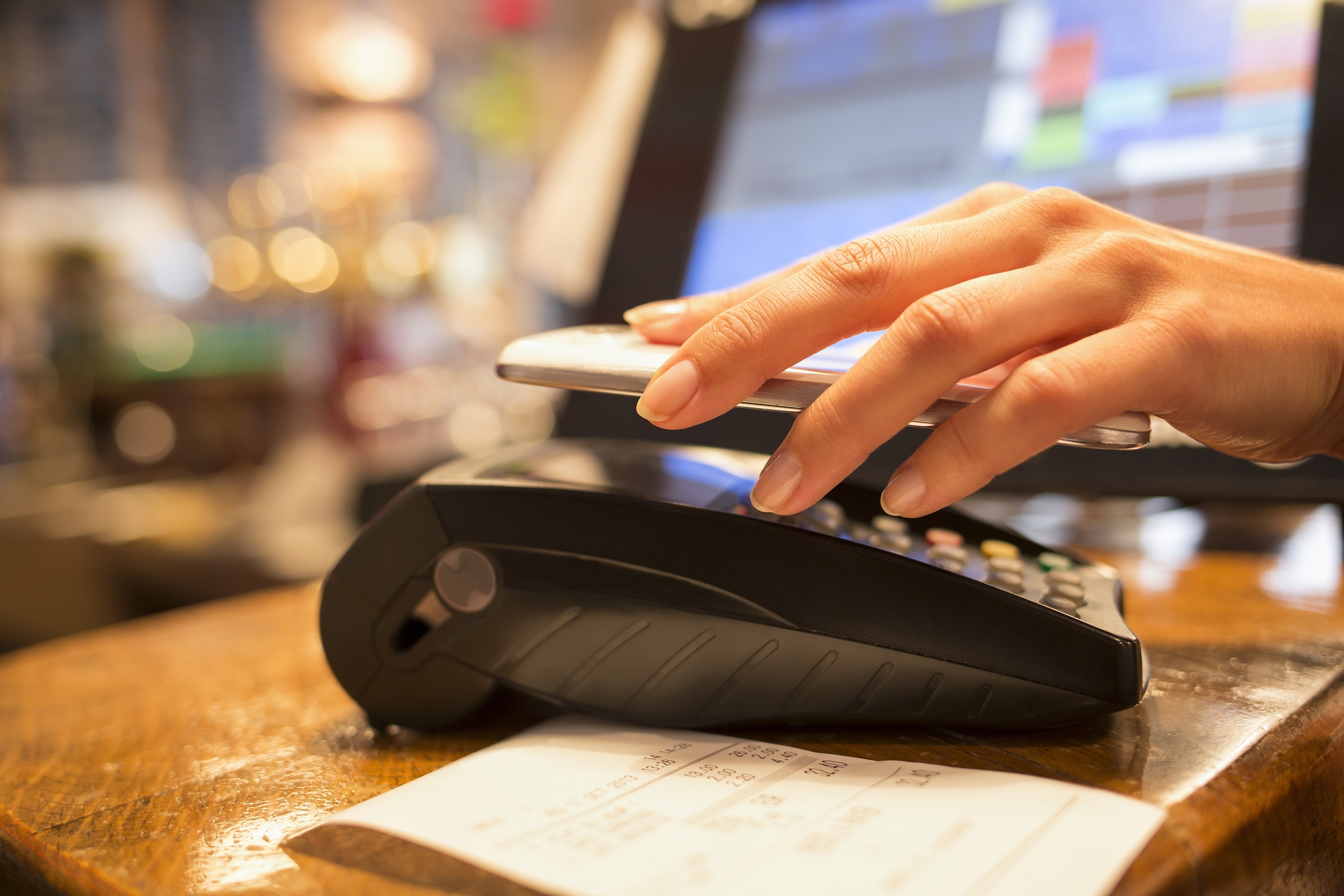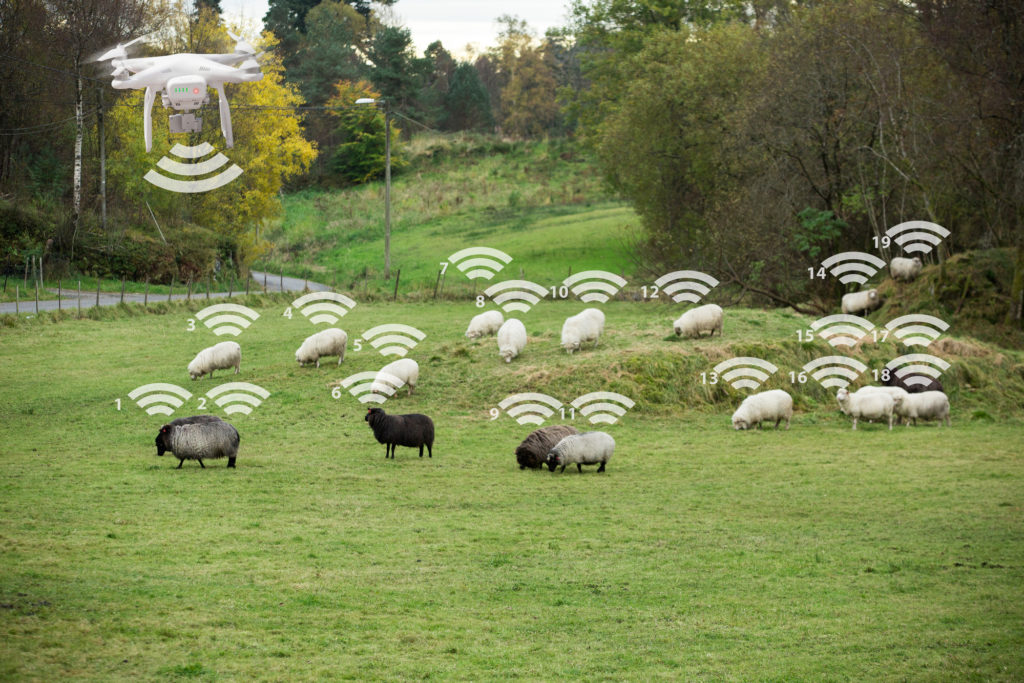You may have heard of RFID technology, but most people don’t have any idea as to how it actually works and how to use it in a practical way. In this article, we will attempt to aid that problem by giving you a complete introduction to this technology and its unique properties.
How Does RFID Work?
The first thing to understand is the fact that RFID is just a tracking device that uses radio waves. This is an advantageous way to transmit a signal because radio waves work in a completely wireless fashion and are capable of extremely long range.
Radio waves exist in a variety of different frequencies. So what is a frequency? The answer is actually pretty simple.
Radio waves are measured as part of the electromagnetic spectrum, which also includes things like X-rays, microwave radiation, nuclear radiation (aka gamma rays), and the energy emitted by the sun. All of these energy forms are constantly oscillating, which is a fancy way of saying that they are always moving and changing. The rate at which they “move” is a measurement of their energetic power, and that’s why the frequency scale exists.
Radio waves are the frequencies that exist between 3 kilohertz and 300 gigahertz. Obviously, they are on the low end of the electromagnetic spectrum. These waves have been used for radio and TV signals for a very long time. It may also surprise you to learn that modern cellphones, even with all their high-tech features, are still using radio waves to transmit signals.
In World War 2, they came up with a different way of using radio waves. Most of the major powers involved in that war were using radar to track aircraft, but they were often unable to tell the difference between friendly aircraft and the enemy. It was the Germans who first figured out that they could create a slightly different radar signature by rolling the plane in a certain way. The British then built upon this idea and built the first active RFID devices.
Over the ensuing decades, this technology has improved quite a bit and is now used for many things other than identifying planes and other aircraft. Because of the way the technology works, it can be adapted for many different purposes.
It works like this: The RFID system consists of a tracking chip and a control device, which is a reader and a transmitter in one. The control device sends a signal to the chip in the form of radio waves. The chip then uses those radio waves as an energy source to activate a simple circuit. The frequency is modulated to a different frequency and sent back to the control device. All of this happens at a speed that is roughly equivalent to the speed of sound.
The Many Applications Of RFID Technology:
There are many ways in which RFID tech has proven to be very handy. Obviously, it can be used for theft prevention and asset tracking, as you have probably guessed. However, there are many other uses that most people would never even imagine. Here are some of the more common uses for RFID:
- Inventory Management: Apart from the obvious theft prevention benefits, RFID can also help a business to do a more efficient job of tracking its inventory. This can give you a better idea of what to stock, what not to stock, and where various items can be found.
- Timed Sporting Events: Many different sporting events, especially races, require the use of a timer. However, RFID offers a more convenient alternative. For instance, if all the runners in a race wear an RFID device, then a tracker at the finish line can immediately determine the winner, and can also track lap times for all runners.
- Drug Control: Prescription drug abuse has become a rampant problem in America (and in many other places). Sometimes, those who are legally prescribed narcotic medications will be made to use a pill tracker. These are essentially RFID devices that track how many pills they have, and when they are removed. This measure is mainly meant to keep legal users of narcotic medications from selling their prescriptions.
- Tracking Delivered Goods: With so much of the world’s business moving to the internet, and with the prospect of drone delivery systems on the horizon, there has never been more need for something like this.
- File Tracking: When keeping track of physical files, it can be very helpful to index the whole system with RFID tags. This makes it much easier to find specific documents and records.
- Animal Tagging: RFID tags are already in wide-scale use for the tracking of pets and livestock. While it isn’t always necessary, it is an effective way to keep track of your animals.
- Rental Item Tracking: The biggest problem faced by rental-based businesses is the danger that clients will not return rented items. In most cases, the business owners can’t do anything about it (other than canceling their membership). By using RFID, they can ensure that every item will be returned.
- Location Tracking: There are many instances in which you might need to keep track of a specific person. For instance, people on house arrest will often have to wear an ankle bracelet that contains an RFID chip.
The Different Types Of RFID
There’s a lot of information here, so let’s recap: As we already explained, RFID works through the use of specific radio frequencies. Radio frequencies fall between a range of 3 Khz and 300 Mhz. If you take a closer look at the electromagnetic scale that we presented earlier, you can see that radio frequencies have an extremely wide range. This explains why radio waves have been used for so many things.
There are a number of different types of RFID devices on the market, but the main difference between them is the frequency that they use. Some devices use a lower frequency while others use a high frequency.
Low-Ferquency RFID Devices
Low-frequency RFID generally operates within a frequency range of 125-134 kHz. These are generally very short-range devices that need to be within 10 centimeters to set off the reader. These are useful for livestock tagging and other uses in which close range is good enough. The ignition key fob of your vehicle most likely has a device like this embedded inside. It detects the RFID device in the head of the key and prevents the car from starting if the chip is not detected. As you might guess, this is meant to prevent people from using counterfeit keys and other dirty tricks.
The main advantage of these devices is the fact that they are so cheap. A tag of this type will normally cost between $0.75 and $5.00, making it a very cost-effective solution for those who don’t need a lot of range. However, this type of RFID is not very useful for theft prevention or asset tracking.
High-Frequency RFID Devices
High-frequency RFID generally operates within a frequency range of 3-30 Mhz. They offer a little more range than the low-frequency device. In fact, raising the frequency to this level triples the range. Still, when you triple ten centimeters, you only get an effective range of 30 centimeters. That is equal to one foot for those of you who don’t like the metric system.
In terms of cost, there is a lot of variation here. The average cost ranges from $0.20 to $10.00, depending on the size and complexity of the tag. While this is a slightly higher price range, some high-frequency tags are actually much cheaper than the low-frequency tags. Thus, they offer the potential of a money-saving alternative for those who could make do with low-frequency tags.
DVD rental kiosks will often use a device of this sort. When the whole process is automated, it is difficult to ensure that the item will always come within 10 centimeters of the sensor. Thus, a high-frequency device ensures that the machine will always read properly.
Ultra-High-Frequency RFID Devices
Ultra high-frequency RFID generally operates within a frequency range of 300-3000 Mhz. These are the big dogs of the RFID world and offer ranges that are comparable to that of AM or FM radio waves. These things have ranges that usually fall between 30 meters and 100 meters, with some having much longer ranges than that.
When it comes to long-range tracking, this is really the only option you have. As such, this kind of tracking device is used for many things, like the anti-theft transponders that are used in many high-value items like cars and high-end jewelry. For theft protection and asset tracking, this is the only good option. With this kind of range, you will have a much bigger window of opportunity in which to catch a would-be thief or scammer.
Within this range of tags, you can choose between passive ID and active ID. What is the difference? Well, active ID systems require a battery, which is used to transmit a signal to the control device. Passive ID systems use the standard RFID setup described above, in which the chip uses the radio waves as a power source to return the signal at a different frequency.
While active ID devices are more reliable (and thus more effective), passive ID devices are far cheaper and are a better option for most uses. To give you an idea of the difference: passive ID devices range in price from $0.09 to $20.00. Thus, they can actually be some of the cheapest RFID options of all if you choose wisely. Active RFID devices usually range in price from $25.00 to $50.00 per tag.
However, there is just one problem with passive ID devices: They only have a maximum range of about 25 meters. For those of you who don’t like the metric system, a meter is about the same distance as a yard. Thus, if you want something that can track at long ranges, you will need to pony up for a more expensive Active ID device. Because of the batteries, the active devices will also run you a little bit more in shipping costs.
RFID Systems Can Sometimes Pay For Themselves
As we have already seen, RFID devices have a very wide cost range that goes anywhere from $0.20 to $50.00, and there are certain specialty tags that cost even more. If you happen to need a lot of these tags, that adds up to a major business expense.
However, there are many cases in which that kind of investment will pay for itself. For instance, if you own a shop that is located in a high-crime area, you are probably losing a lot of money due to theft and fraud. In such a case, it would be worth your while to get the best tags that you can afford. If, on the other hand, you are operating in a very low-crime area, you can probably get away with one of the cheaper options.
What we are saying here is that you should base your expense upon your level of need. If you don’t have that great a need for RFID devices, it probably won’t be worth the cost. If you are going to be using these things every day to track important things, then it will most certainly be worth the cost.
Conclusion
While this is pretty sophisticated technology, it’s actually a lot simpler than it seems. All of this stuff is based on simple and well-understood principles, so anyone should be able to understand this tech. Nevertheless, it is not often enough that people take the time to explain the subject fully. We have done our best to be as thorough as possible and to give you all the most relevant information without the nerdy stuff that you don’t even need to know. If we have done a good job in this, please fill out the contact form below.






